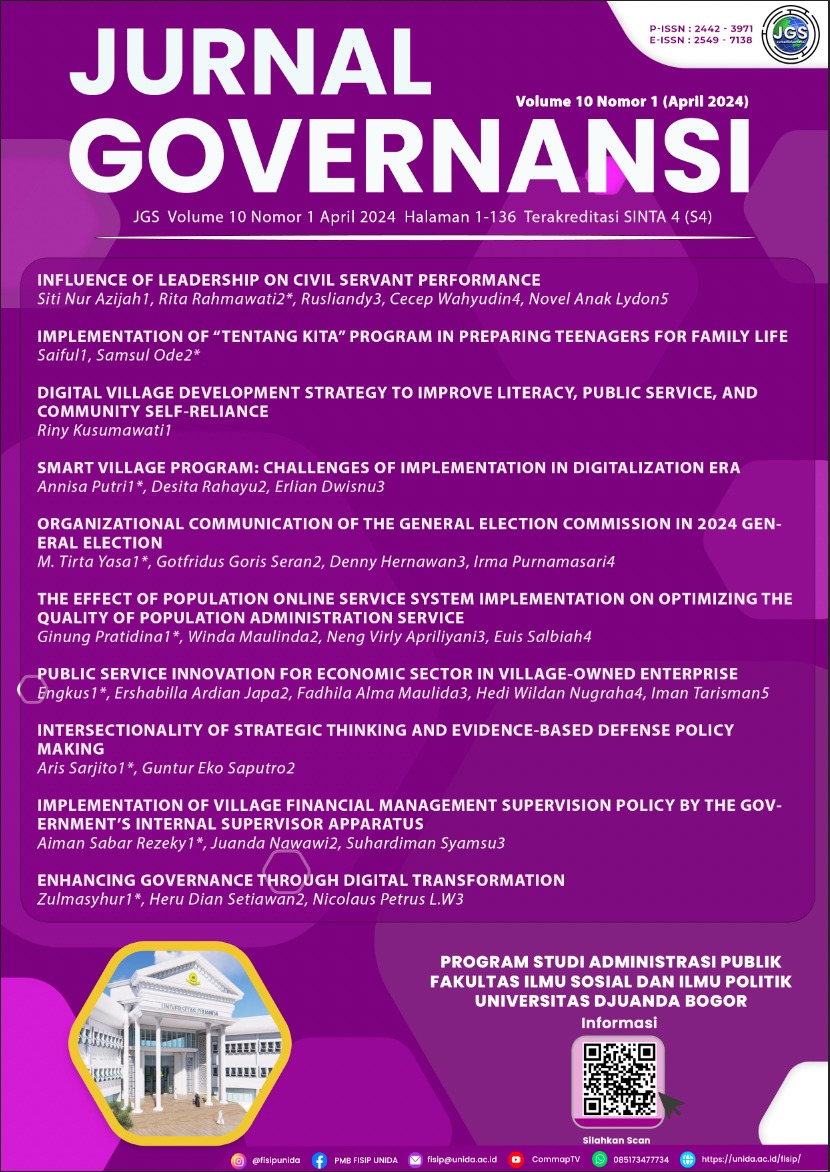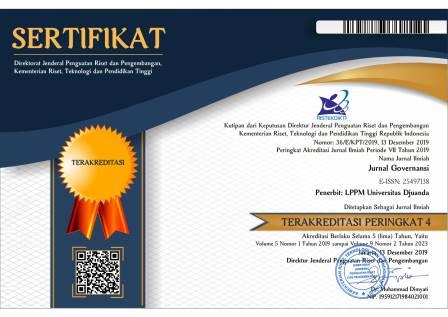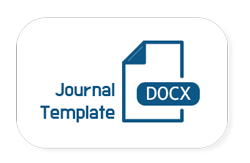INTERSECTIONALITY OF STRATEGIC THINKING AND EVIDENCE-BASED DEFENSE POLICY MAKING
DOI:
https://doi.org/10.30997/jgs.v10i1.11309Keywords:
defense policy-making, evidence-based, intersectionality, strategic thinkingAbstract
In an era characterized by rapid geopolitical shifts and evolving security threats, the imperative for evidence-based defense policymaking has never been more pressing. This research delves into the intricate nexus between strategic thinking and empirical evidence in defense policy formulation, seeking to address key gaps in understanding and practice. Through a qualitative analysis of secondary data encompassing scholarly literature, governmental reports, and defense policy documents, this study elucidates the fundamental elements of strategic thinking within defense policymaking frameworks and examines their current integration with empirical evidence. The research findings shed light on the pivotal role of strategic foresight, threat assessment methodologies, and resource allocation strategies in shaping defense policy. Moreover, the study explores the impact of intersectionality, encompassing factors such as geopolitical dynamics, technological advancements, and socioeconomic disparities, on the effectiveness of strategic thinking and the utilization of empirical evidence in defense policy making processes. The novelty lies in the comprehensive exploration of intersectionality's impact on defense policy formulation and the identification of guiding principles to enhance the integration of strategic thinking and empirical evidence. The research underscores the need for a holistic approach that acknowledges and addresses the multifaceted nature of contemporary security challenges.
References
Al-Abbadi, L., Alsmairat, M., Alshawabkeh, R., & Rumman, A. (2024). The impact of strategic thinking on organizational excellence: An empirical examination in Jordan’s ICT sector. International Journal of Data and Network Science, 8(2), 1169–1178.
Ananthapavan Id, J., Sacks Id, G., Moodie, M., Nguyen, P., & Carter, R. (2022). Preventive health resource allocation decision-making processes and the use of economic evidence in an Australian state government-A mixed methods study. https://doi.org/10.1371/ journal.pone.0274869
Andersen, T. J., Sax, J., & Giannozzi, A. (2022). Conjoint effects of interacting strategy-making processes and lines of defense practices in strategic Risk Management: An empirical study. Long Range Planning, 55(6), 102164.
Angerschmid, A., Zhou, J., Theuermann, K., Chen, F., & Holzinger, A. (2022). Fairness and explanation in AI-informed decision making. Machine Learning and Knowledge Extraction, 4(2), 556–579.
Aning, K., & Anaba, A. (2016). Intersectionality in Security Sector Management: The Case of Ghana. Journal of Security Sector Management, 14(2), 1–19.
Armstrong, J. S., & Green, K. C. (2017). Demand forecasting II: Evidence-based methods and checklists.
Bagilhole, B. (2010). Applying the lens of intersectionality to UK equal opportunities and diversity policies. Canadian Journal of Administrative Sciences/Revue Canadienne Des Sciences de l’Administration, 27(3), 263–271.
Baldino, D., & Carr, A. (2016). Defence diplomacy and the Australian defence force: smokescreen or strategy? Australian Journal of International Affairs, 70(2), 139–158.
Boesso, G., Favotto, F., & Michelon, G. (2015). Stakeholder prioritization, strategic corporate social responsibility and company performance: further evidence. Corporate Social Responsibility and Environmental Management, 22(6), 424–440.
Bolisani, E., & Bratianu, C. (2017). Knowledge strategy planning: an integrated approach to manage uncertainty, turbulence, and dynamics. Journal of Knowledge Management, 21(2), 233–253.
Burton, C. (2014). Current perspectives on the intersectionality of military women. Underserved Women of Color, Voice, and Resistance: Claiming a Seat at the Table, 43–57.
Cairney, P. (2016). The politics of evidence-based policy making. Springer.
Cameron, A. I., & Tedds, L. M. (2023). Canada’s GBA+ framework in a (post) pandemic world: Issues, tensions and paths forward. Canadian Public Administration, 66(1), 7–27.
Christensen, G., Freese, J., & Miguel, E. (2019). Transparent and reproducible social science research: How to do open science. University of California Press.
Collins, P. H. (2015). Intersectionality’s definitional dilemmas. Annual Review of Sociology, 41, 1–20.
Costino, K. (2018). Equity-minded faculty development: An intersectional identity-conscious community of practice model for faculty learning. Metropolitan Universities, 29(1), 117–136.
Crenshaw, K. (2013). Demarginalizing the intersection of race and sex: A black feminist critique of antidiscrimination doctrine, feminist theory and antiracist politics. In Feminist legal theories (pp. 23–51). Routledge.
Creswell, J. W., & Creswell, J. D. (2017). Research design: Qualitative, quantitative, and mixed methods approaches. Sage publications.
Criado-Perez, C., Shinkle, G. A., Höllerer, M. A., Sharma, A., Collins, C., Gardner, N., Hank Haeusler, M., & Pan, S. (2022). Digital transformation in the Australian AEC industry: prevailing issues and prospective leadership thinking. Journal of Construction Engineering and Management, 148(1), 05021012.
DACOWITS. (2020). Annual Report. Defense Advisory Committee on Women in the Services (DACOWITS). https://dacowits.defense.gov/Portals/48/Documents/Reports/2020/DACOWITS-AR-2020.pdf
Davis, K. (2016). Intersectionality as Buzzword: A Sociology of Science Perspective on What Makes a Feminist Theory Successful 1. In Framing Intersectionality (pp. 43–54). Routledge.
Destradi, S., Cadier, D., & Plagemann, J. (2021). Populism and foreign policy: a research agenda (Introduction). Comparative European Politics, 19(6), 663–682.
DiMaggio, P. J., & Powell, W. W. (1983). The iron cage revisited: Institutional isomorphism and collective rationality in organizational fields. American Sociological Review, 48(2), 147–160.
Dionisio, M. A. (2017). Strategic thinking: The role in successful management. Journal of Management Research, 9(4), 44–57.
Elias, A. A. (2022). Multi-stakeholder participation for achieving sustainable development goals: A systems thinking approach. In Environmental Sustainability and Agenda 2030: Efforts, Progress and Prospects (pp. 45–65). Emerald Publishing Limited.
Eriksson, E. A., & Weber, K. M. (2008). Adaptive Foresight: Navigating the complex landscape of policy strategies. Technological Forecasting and Social Change, 75(4), 462–482.
Evans, C. J. (2016). Thinking Strategically. Management and Leadership Skills for Medical Faculty: A Practical Handbook, 201–211.
Franco, C., Marzucchi, A., & Montresor, S. (2014). Absorptive capacity, proximity in cooperation and integration mechanisms. Empirical evidence from CIS data. Industry and Innovation, 21(4), 332–357.
Fujiwara, T., Müller, K., & Schwarz, C. (2023). The Effect of Social Media on Elections: Evidence from the United States *.
GAO. (2020). Diversity and Inclusion: Actions Needed to Improve Evaluation of Public Health and Science Programs. https://www.gao.gov/assets/gao-20-346.pdf
General, I. (2022). Department of Defense Office of Inspector General Fiscal Year 2022 Top Management Challenges. https://media.defense.gov/2021/Nov/16/2002893873/-1/-1/1/ MANAGEMENT%20CHALLENGES_FY22.PDF
George, A. L., & Stern, E. K. (2002). Harnessing conflict in foreign policy making: from devil’s to multiple advocacy. Presidential Studies Quarterly, 32(3), 484–505.
Ghiselli, A. (2018). Revising China’s Strategic Culture: Contemporary Cherry-Picking of Ancient Strategic Thought. The China Quarterly, 233, 166–185.
Giannakis, M., & Papadopoulos, T. (2016). Supply chain sustainability: A risk management approach. International Journal of Production Economics, 171, 455–470.
Government of the United Kingdom. (2021). Global Britain in a Competitive Age: The Integrated Review of Security, Defence, Development and Foreign Policy. https://assets.publishing. service.gov.uk/government/uploads/system/uploads/attachment_data/file/971859/CP411_Integrated_Review.pdf
Grant, R. M. (2021). Contemporary strategy analysis. John Wiley & Sons.
Halevy, N. (2016). Strategic thinking. In Advances in experimental social psychology (Vol. 54, pp. 1–66). Elsevier.
Hancock, A.-M. (2007). Intersectionality as a normative and empirical paradigm. Politics & Gender, 3(2), 248–254.
Henry, M. (2017). Problematizing military masculinity, intersectionality and male vulnerability in feminist critical military studies. Critical Military Studies, 3(2), 182–199.
Holling, C. S., & Walters, C. (1978). Adaptive environmental assessment and management.
Howard, M. (2018). The classical strategists (1969). Adelphi Series, 58(472–474), 179–214.
Hutchings, R. L., & Treverton, G. F. (2022). Rebuilding Strategic Thinking. Center for Strategic and International Studies (CSIS).
Institute for Economics and Peace. (2021). Global Peace Index 2021: Measuring Peace in a Complex World. http://visionofhumanity.org/reports
Jaiswal, J., & Mumba, M. N. (2022). The role of nursing in loosening the pervasive grip of intersectional stigma. Journal of Psychosocial Nursing and Mental Health Services, 60(12), 9–15.
Kaplan, S., & Garrick, B. J. (1981). On the Quantitative Definition of Risk. Risk Analysis, 1(1), 11–27.
Klinke, I. (2015). European geopolitics after the crisis. Taylor & Francis.
Laurin, J. E. (2014). Gideon by the numbers: The emergence of evidence-based practice in indigent defense. Ohio St. J. Crim. L., 12, 325.
Lee, C.-C., Olasehinde-Williams, G., & Akadiri, S. Saint. (2021). Are geopolitical threats powerful enough to predict global oil price volatility? Environmental Science and Pollution Research, 28, 28720–28731.
Lösing, F., Intersectionality, W., Bilge, S., Maeso, S. R., & Araújo, M. (n.d.). Ifor a discussion of the collage see the editorial.
Michalski, A. (2019). Diplomacy in a changing world order: The role of strategic partnerships. Diambil Kembali Dari The Swedish Institute of International Affairs: Https://Www. Ui. Se/Globalassets/Ui.Se-Eng/ Publications/Ui-Publications/2019/Ui-Paper, 10–2019.
Moneta, L. (2017). Intersectionality in student affairs: Perspective from a senior student affairs officer. New Directions for Student Services, 2017(157), 69–79.
Nosek, B. A., Banaji, M. R., & Greenwald, A. G. (2002). Harvesting implicit group attitudes and beliefs from a demonstration web site. Group Dynamics: Theory, Research, and Practice, 6(1), 101.
Nuechterlein, D. E. (1976). National interests and foreign policy: A conceptual framework for analysis and decision-making. Review of International Studies, 2(3), 246–266.
Parthasarthy, R., & Sethi, S. P. (2018). The impact of flexible automation on business strategy and organizational structure. In Organizational Innovation (pp. 319–344). Routledge.
Pew Research Center. (2020). National Security and Defense. https://www. pewresearch.org/topics/national-security-and-defense/
Razma, G. (2023). Strategic Facts as a Comprehensive Model for Defence Analysis. Defence Studies, 23(2), 254–273.
Rohall, D. E., Ender, M. G., & Matthews, M. D. (2017). Diversity in the military. Inclusion in the American Military: A Force for Diversity, 1–16.
Sarjito, A. (2023a). Evaluation of Indonesian Government Policies in Addressing Climate Change and Natural Disasters. JISHUM: Jurnal Ilmu Sosial Dan Humaniora, 2(1), 103–124.
Sarjito, A. (2023b). In The Shadows of Governance: Exploring the Untamed Territories of Administrative Discretion. Sawala: Jurnal Administrasi Negara, 11(2), 295–310.
Sarjito, I. A., Djati, S. P., & Th, M. (2023). Manajemen Pertahanan. Indonesia Emas Group.
Schlaile, M. P., & Urmetzer, S. (2019). Transitions to sustainable develop-ment. Decent Work and Economic Growth, Springer International Publishing.
Schwartz, J. L. (2020). Evaluating and deploying COVID-19 vaccines—The importance of transparency, scientific integrity, and public trust. New England Journal of Medicine, 383(18), 1703–1705.
Settembre-Blundo, D., González-Sánchez, R., Medina-Salgado, S., & García-Muiña, F. E. (2021). Flexibility and resilience in corporate decision making: a new sustainability-based risk management system in uncertain times. Global Journal of Flexible Systems Manage-ment, 22(Suppl 2), 107–132.
Simon, H. A. (1957). Models of man; social and rational.
Slim, H. (2018). Impartiality and Intersectionality. https://blogs.icrc.org/law-and-policy/2018/01/16/impartiality-and-intersectionality/
Smith, S., & Stavrevska, E. B. (2022). A different Women, Peace and Security is possible? Intersectionality in Women, Peace and Security resolutions and national action plans. European Journal of Politics and Gender, 5(1), 63–82.
Smithson, M. (2017). Risk Assessment and Contingency Planning in Defense Policy Making. Defense Analysis Quarterly, 12(1), 78–94.
Steenkamp, M. M. (2016). True evidence-based care for posttraumatic stress disorder in military personnel and veterans. JAMA Psychiatry, 73(5), 431–432.
Steff, R. (2016). Strategic thinking, deterrence and the US ballistic missile defense project: from Truman to Obama. Routledge.
Swalwell, E. M., & Alagood, R. K. (2021). Homeland security twenty years after 9/11: Addressing evolving threats. Harv. J. on Legis., 58, 221.
Taliaferro, A. C., Gonzalez, L. M., Tillman, M., Ghosh, P., Clarke, P., & Hinkle, W. (2022). Defense Governance and Management: Improving the Defense Management Capabilities of Foreign Defense Institutions A Guide to Capability-Based Planning (CBP). Institute for Defense Analyses.
Tan, A. S. L., Hinds, J. T., Smith, P. H., Antin, T., Lee, J. P., Ostroff, J. S., Patten, C., Rose, S. W., Sheffer, C. E., & Fagan, P. (2023). Incorporating intersectio-nality as a framework for equity-minded tobacco control research: a call for collective action toward a paradigm shift. Nicotine and Tobacco Research, 25(1), 73–76.
Troisi, O., Maione, G., Grimaldi, M., & Loia, F. (2020). Growth hacking: Insights on data-driven decision-making from three firms. Industrial Marketing Management, 90, 538–557.
Waddell, C., Shepherd, C., Schwartz, C., & Barican, J. (2014). Child and youth mental disorders: prevalence and evidence-based interventions. Vancouver, BC: Children’s Health Policy Centre, Faculty of Health Sciences, Simon Fraser University.
Wagner Mainardes, E., Ferreira, J. J., & Raposo, M. L. (2014). Strategy and strategic management concepts: are they recognised by management students?
Walter, B. F., & Huth, P. K. (2020). What the Data Say about the Risks of Civil War. Journal of Conflict Resolution, 64(1), 54–89.
Wang, J., Errapotu, S. M., Gong, Y., Qian, L., Jäntti, R., Pan, M., & Han, Z. (2018). Data-driven optimization based primary users’ operational privacy preservation. IEEE Transactions on Cognitive Communications and Networking, 4(2), 357–367.
Wang, W., Sun, D., Jiang, F., Chen, X., & Zhu, C. (2022). Research and challenges of reinforcement learning in cyber defense decision-making for intranet security. Algorithms, 15(4), 134.
Weyhrauch, W. S., & States, C. O. F. U. W. D. C. W. D. C. U. (2017). Development and preliminary validation of the Strategic Thinking Mindset Test (STMT). Washington DC: Consortium of Universities Washington DC.
Wilkinson, A. (2017). Strategic foresight primer. European Political Strategy Centre.
Wright, A. L., Zammuto, R. F., Liesch, P. W., Middleton, S., Hibbert, P., Burke, J., & Brazil, V. (2016). Evidence‐based management in practice: Opening up the decision process, decision‐maker and context. British Journal of Management, 27(1), 161–178.
Downloads
Published
How to Cite
Issue
Section
License
Copyright (c) 2024 Aris Sarjito, Guntur Eko Saputro

This work is licensed under a Creative Commons Attribution-ShareAlike 4.0 International License.
Authors who publish with Jurnal Governansi agree to the following terms:
- Authors retain copyright and grant the journal right of first publication with the work simultaneously licensed under a Creative Commons Attribution 4.0 International License that allows others to share the work with an acknowledgement of the work's authorship and initial publication in Jurnal Governansi.
- Authors are able to enter into separate, additional contractual arrangements for the non-exclusive distribution of the journal's published version of the work (e.g., post it to an institutional repository or publish it in a book), with an acknowledgement of its initial publication in Jurnal Governansi.
- Authors are permitted and encouraged to post their work online (e.g., in institutional repositories or on their website) prior to and during the submission process, as it can lead to productive exchanges, as well as earlier and greater citation of published work.



















